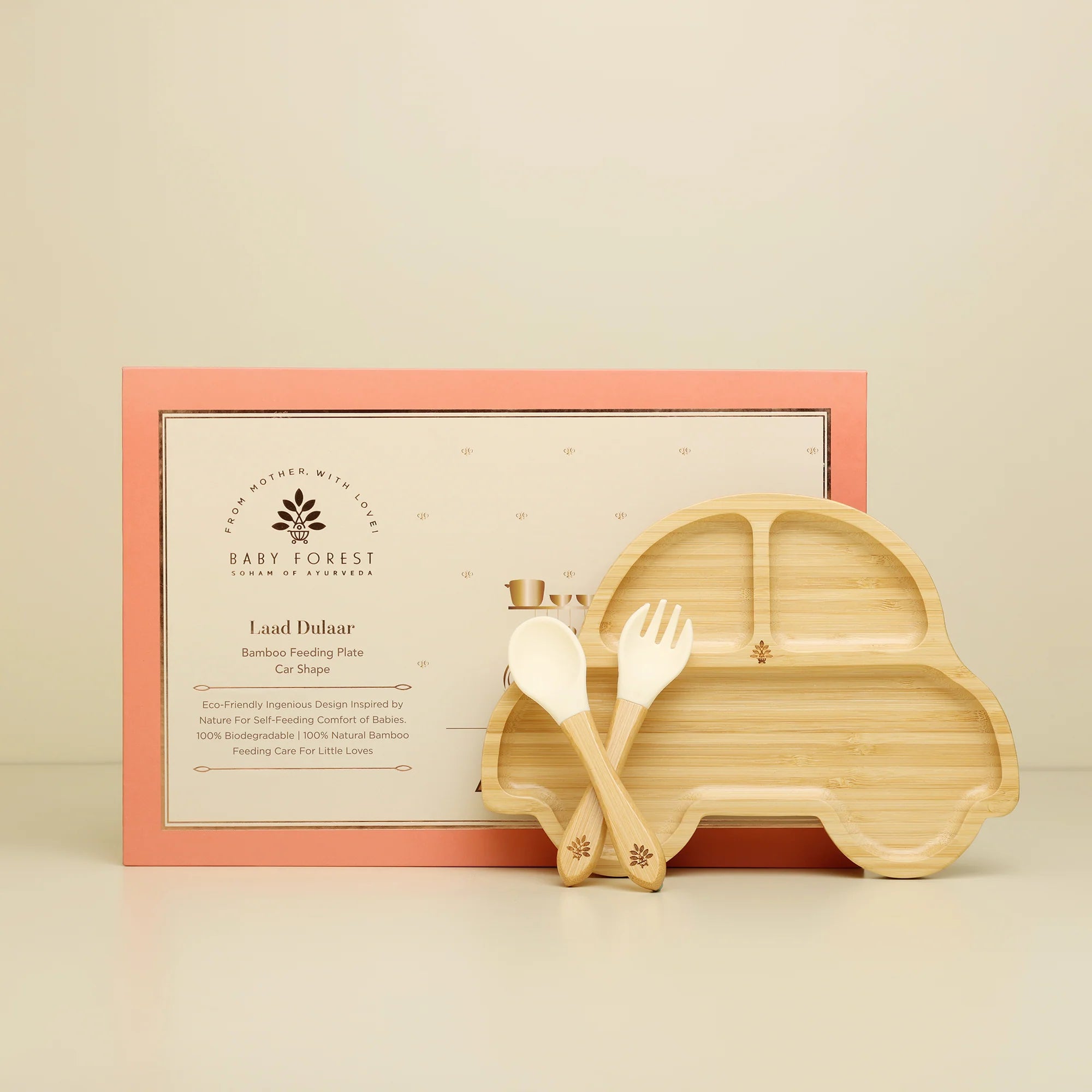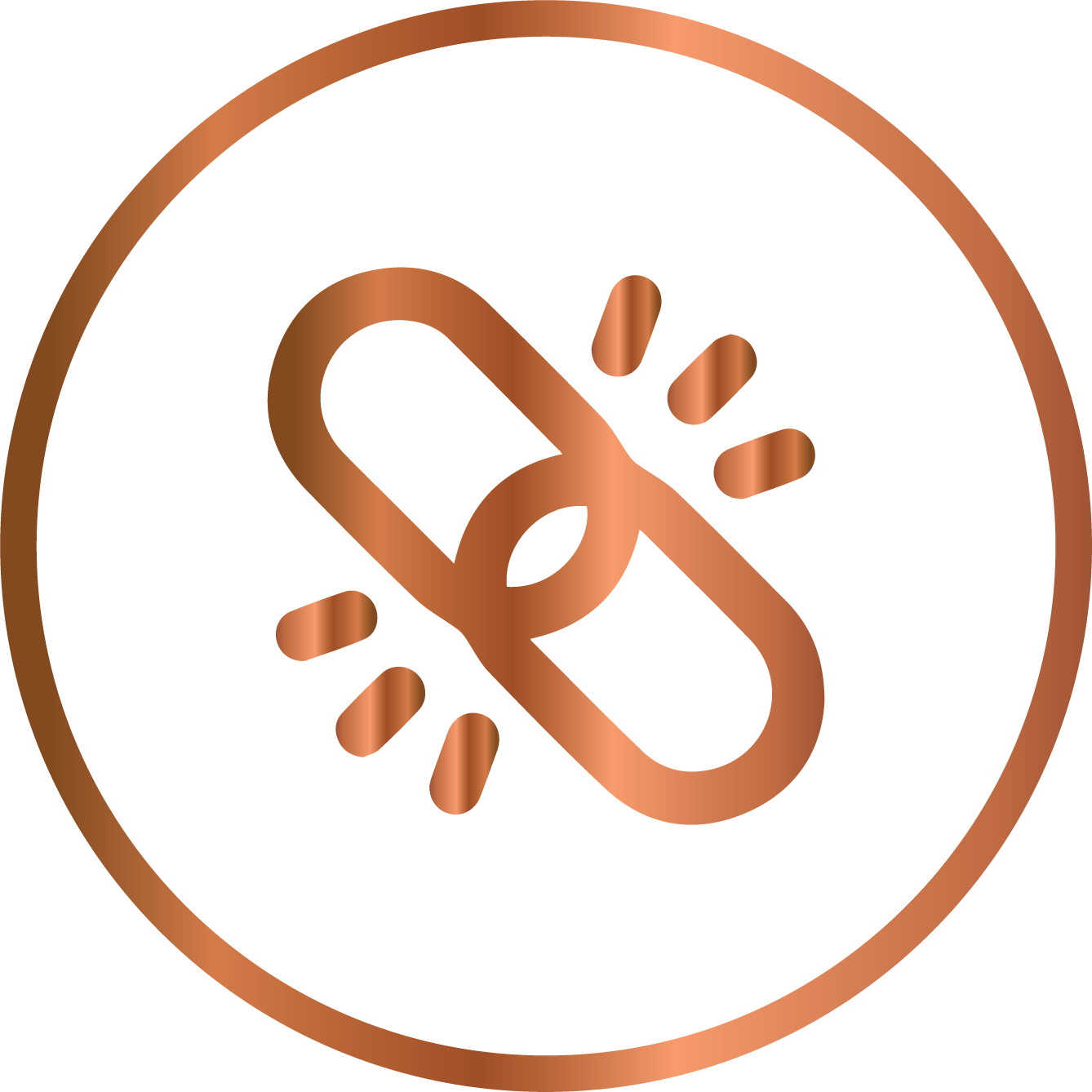Why Bamboo Utensils?
Bamboo baby utensils are great for everyday use and are made from 100% natural Bamboo. Scientific studies have shown that eating food in bamboo utensils leads to healthier digestion and increased absorption of nutrients. Bamboo contains antibacterial properties that reduce the risk of bacterial infections caused by food or touch. Our bamboo is sourced from FSC certified supplier. Hence, our bamboo plates are eco-friendly, bio biodegradable, and completely free from toxins and chemicals that won’t absorb bacteria or odors in your baby’s meal, unlike regular plastic and metals.
FAQs
Is bamboo safe for baby feeding plates compared to plastic and metal?
Bamboo is naturally antibacterial and free from harmful chemicals often found in plastics and metals. It doesn’t absorb food odors or bacteria, making it a hygienic choice for babies. Our Laad Dulaar Bamboo Feeding Plate is FSC-certified, ensuring a non-toxic, safe, and eco-conscious mealtime for your baby, all while being gentle on their developing digestive system.
What makes a car-shaped bamboo feeding plate better for babies?
A car-shaped plate adds excitement to mealtime, encouraging self-feeding, making it visually appealing, and keeping your little one engaged. The Laad Dulaar Bamboo Feeding Plate combines playful design with functionality, making mealtimes fun, organized, and less messy, especially with its silicone suction base that keeps the plate firmly in place on flat surfaces.
Do suction base plates really prevent spills and messes?
Yes, the high-quality suction base on the Laad Dulaar plate ensures it stays firmly in place on tables and highchair trays. It helps prevent those dreaded mealtime messes—no more tipped-over plates or scattered bites. Your baby can stay focused on exploring their food while you enjoy a more peaceful, mess-free feeding experience.
Can bamboo feeding plates go in the refrigerator or freezer?
Yes, bamboo plates can go in the refrigerator for short periods, like when storing leftovers or prepping meals in advance. However, avoid keeping them in the freezer. Extremely cold temperatures can cause the bamboo to dry out, become frangible, or crack over time. To preserve your Laad Dulaar Bamboo Feeding Plate, store food separately in airtight containers and use the plate only during mealtime.
Will bamboo plates last long with daily use?
When cared for properly, bamboo feeding plates are incredibly durable. Unlike plastic, they don’t warp or degrade easily, and they’re gentler on surfaces and babies’ hands. Our Laad Dulaar plate is made to endure daily feeding routines while staying sturdy, safe, and stylish, making it a worthwhile, long-term mealtime companion for your baby.
What are the benefits of using bamboo plates for kids?
Bamboo plates are a natural, non-toxic choice that goes beyond just safety; they support your baby’s digestive health. Scientific studies suggest that bamboo utensils help improve nutrient absorption and promote better digestion, especially in growing babies. They’re also antibacterial, eco-friendly, and gentle on gums. The Laad Dulaar Bamboo Feeding Plate combines all these benefits with a playful design and spill-proof suction base for a worry-free mealtime.
How do I clean and maintain a bamboo feeding plate?
To keep your bamboo plate in perfect condition, wash it gently with mild soap and lukewarm water. Avoid dishwashers or steam sterilizers, as intense heat and moisture can warp or crack natural bamboo. After washing, dry it with a soft cloth. This care helps extend the life of your Laad Dulaar Bamboo Feeding Plate while preserving its smooth, safe finish.
Do bamboo plates retain food smell or color over time?
No, high-quality bamboo plates like the Laad Dulaar Bamboo Feeding Plate are naturally resistant to odors and stains. Unlike plastic or metal, bamboo doesn’t absorb the smell or color of the food served on it. This keeps the plate fresh and hygienic, even after repeated use. With proper cleaning after each meal, your bamboo plate stays clean, odor-free, and safe for your baby’s next delicious bite.
Can moisture damage a bamboo baby plate if not dried properly?
Bamboo is a natural, absorbent material, so if the plate is left wet after washing, it may absorb moisture, leading to swelling, cracking, or even mold over time. Since this is a baby plate used multiple times a day, it’s essential to wash it with mild soap, rinse well, and dry it immediately with a soft cloth. Avoid dishwashers and steam sterilizers; excessive heat and water exposure can permanently damage the bamboo. With just a little care, your baby’s feeding plate will stay hygienic, durable, and safe for everyday use.
What age is ideal to start using bamboo feeding plates?
Bamboo feeding plates can be introduced as soon as your baby begins solids, usually around 6 months. At this stage, babies start exploring self-feeding, and a safe, non-toxic plate becomes essential. The Laad Dulaar Bamboo Feeding Plate is specially designed with a suction base to support this messy yet exciting phase. Its smooth edges and fun shape make it both safe and engaging for early eaters.









